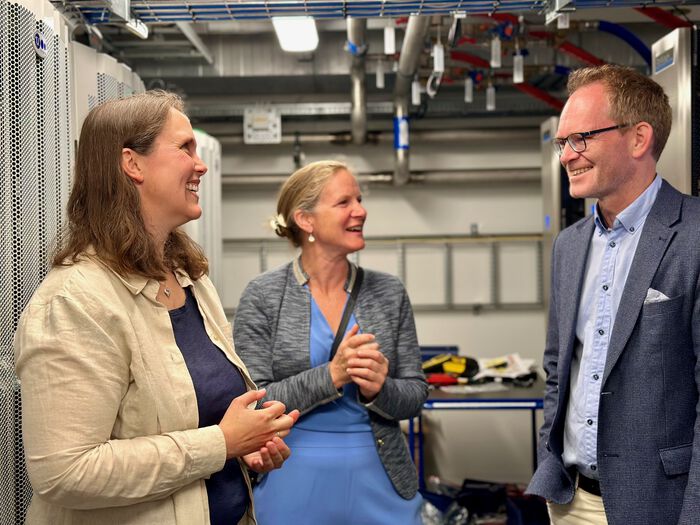
This article is written by Jowita Borowska
I was once called somebody’s favorite astronaut. Close enough. However, as a present master’s degree student in astronomy, I will probably never have a chance (or desire) to experience 3 g acceleration during a rocket launch. Although said jokingly, it raised the question “What is the difference between an astronomer and an astronaut?”
Let’s dig deeper – is astronomer and astrophysicist basically the same scientist? And what about astrologer? Let me guide you through all the uncertainties you may have around this topic and a bit of astro-history.
Astrology and Astronomy
The term “astrology” has Greek roots and comes from the words “astron” (star) and “logia” (study of). Study of stars - sounds scientific, doesn’t it? Well, a long time ago the line between the pure science and beliefs was somewhat blurry. People have been gazing at the night sky since the beginning of humankind. They observed and recorded the movement patterns of celestial bodies (that’s the scientific part, astronomy) and then tried to fit these observations into their life events on Earth (that’s astrology).

Every ancient civilization had some sort of system of beliefs that credited the influence of stars and planets with understanding the present and predicting the future. It is the Babylonians who created the basics of the current western zodiac system. They realized that the sequence of constellations along which the Sun and planets appear to move across the sky can be divided into equal segments to serve as some sort of “celestial clock”. Each of the twelve such selected segments links a given time of year with the constellation and each constellation is linked with a divine presence. The names for the commonly known zodiac signs came later from the Greeks.
Until the 17th century, astrology was considered an accepted branch of knowledge, closely associated with astronomy. However, through the development in science, for instance concepts like heliocentrism or Isaac Newton’s laws of gravity governing the movement of celestial bodies, the fields separated from each other. Astrology became a pseudoscience, based rather on beliefs than verifiable results. Without being too judgmental and unfair I checked my zodiac sign description, it says: “Their ruling planet is Neptune, so Pisces are more intuitive than others and have an artistic talent.” I won’t comment on me being artistic, I’ll just present to you Figure 1. (the drawing I made for the header image of this post before asking a friend for help) and rest my case.
Astronomy and Astrophysics
The origin of the word “astronomy” provides a good description of that field of science. Again, it comes from the Greek “astron” (star) and “nomos” (law or culture). “Law of the stars” or astronomy is actually the study of the entire universe beyond Earth’s atmosphere. It has three main branches – astrometry, celestial mechanics and astrophysics.
Okay, so we have it – every astrophysicist is an astronomer, but not every astronomer is an astrophysicist. In order to be one, you need to be concerned not only with the observations of the outer space and celestial bodies, but also use physical laws to describe the processes governing them. Understanding the nature of the Universe, simulating the past and the future, determining the properties of galaxies, stars, cosmic microwave background – all of this is astrophysics.
The birth of astrophysics came with the development of astronomical spectroscopy and photography in the second half of 19th century. From then on, it was possible to document what the stars were, in addition to where they were. Starting with the Fraunhofer’s observation of the dark absorption lines in the spectrum of the Sun, through Kirchhoff’s and Bunsen’s explanation that every chemical element produces a unique spectrum (some sort of “fingerprint”), scientists were finally able to identify what the stars were made of. It obviously began with studying the chemical composition of the Sun. Then, plenty of other stellar spectra were gathered and classified.

It is worth mentioning the important role of a female scientist, Annie Jump Cannon, who developed the system (still in use today) that groups stars into several spectral types: O, B, A, F, G, K or M, where O- type stars are the hottest and M-type - the coolest. She and her major contributions to astronomy helped women get acceptance within the scientific community and pave the path for future female astronomers, so all of us writing this blog :) .
Astronautics
Having an apparent sympathy for etymology of words, let me explain the origin of the term “astronaut” as well. It is derived from the Greek “astron” (star, you all remember this by now) and “nautes” (sailor). Actually, the nomenclature differs between countries, so that the Russian space travelers are called cosmonauts (from Greek “kosmos” - universe) and Chinese – taikonauts (from Mandarin “taikong” - space).
Regardless of nationality, we are talking about people that are trained to travel beyond Earth’s atmosphere, into space. That is, where exactly?
The Earth’s atmosphere doesn’t simply vanish, but rather becomes thinner and thinner, so that a particular altitude, where space begins, is a matter of agreement. The Federation Aeronautique Internationale (FAI) defines 100 km above sea level to be this imaginary boundary, better known as the Kármán line (from the name of a Hungarian physicist). Any flight above that is regarded as a spaceflight. So far, there are 565 people – 500 men and 65 women - that have flown into space, according to this criterion.

What does it take to become a space traveler? The first American astronauts were military personnel with experience flying jet aircraft and background in engineering (they also had to be shorter than 180 cm to fit in the Mercury spacecraft). However, after 1964 NASA started to train scientists to be astronauts – you had to have a doctorate in medicine, engineering or a natural science.
Now, the requirements changed and a master’s degree is enough (+ at least two years of professional experience and ability to pass the NASA long-duration flight astronaut physical). The candidates participate in an intense 2-year program, where they train with the space suits and learn shuttle and space station systems, navigation, orbital mechanics, survival, controlling a robotic arm, etc. Afterwards, when assigned to a particular mission, they train together with other crew members to prepare for the specific tasks during the spaceflight.
If all this training seems like too much for you, there exists another way to visit space - becoming a space tourist! Like American businessman, Dennis Tito, who paid 20 million dollars for his trip to the International Space Station in 2001, becoming the first space tourist.
So in a nutshell – astrology is not a science, every astrophysicist is an astronomer, but not every astronomer is an astrophysicist, and you have to go higher up than 100 km to be called an astronaut.
Bibliography:
- https://entertainment.howstuffworks.com/horoscopes-astrology/horoscope6.htm
- http://www.historyworld.net/wrldhis/plaintexthistories.asp?historyid=ac32
- https://skyandtelescope.org/astronomy-resources/whats-difference-astrology-astronomy/
- https://www.astrology-zodiac-signs.com/zodiac-signs/pisces/
- https://www.physlink.com/education/askexperts/ae296.cfm
- https://history.aip.org/history/exhibits/cosmology/tools/tools-spectroscopy.htm
- https://www.space.com/34707-annie-jump-cannon-biography.html
- https://www.britannica.com/topic/astronaut/Astronaut-training
- https://www.nasa.gov/audience/forstudents/postsecondary/features/F_Astronaut_Requirements.html
- https://www.nationalgeographic.com/science/2018/12/where-is-the-edge-of-space-and-what-is-the- karman-line/
- https://www.britannica.com/topic/space-tourism




